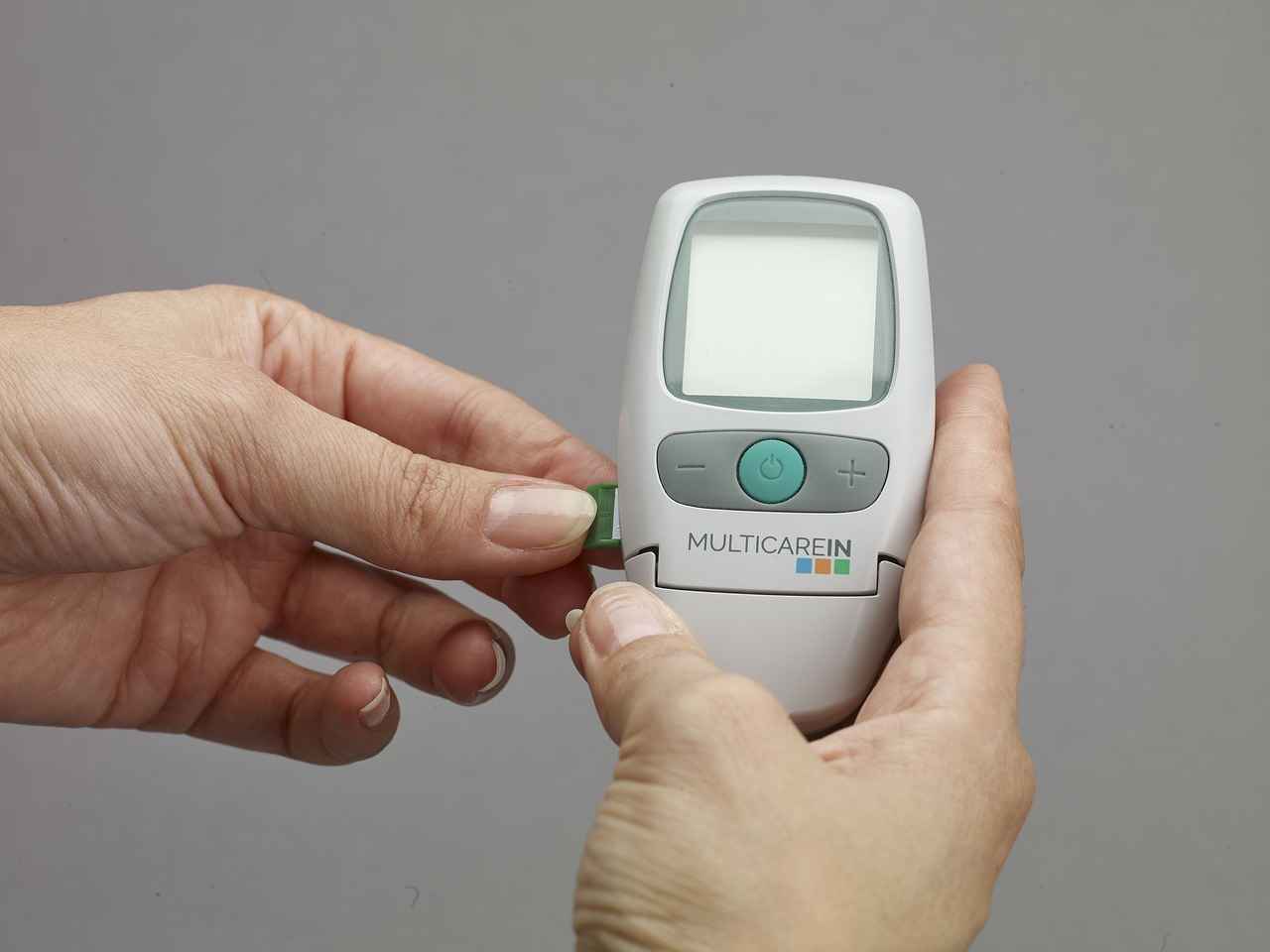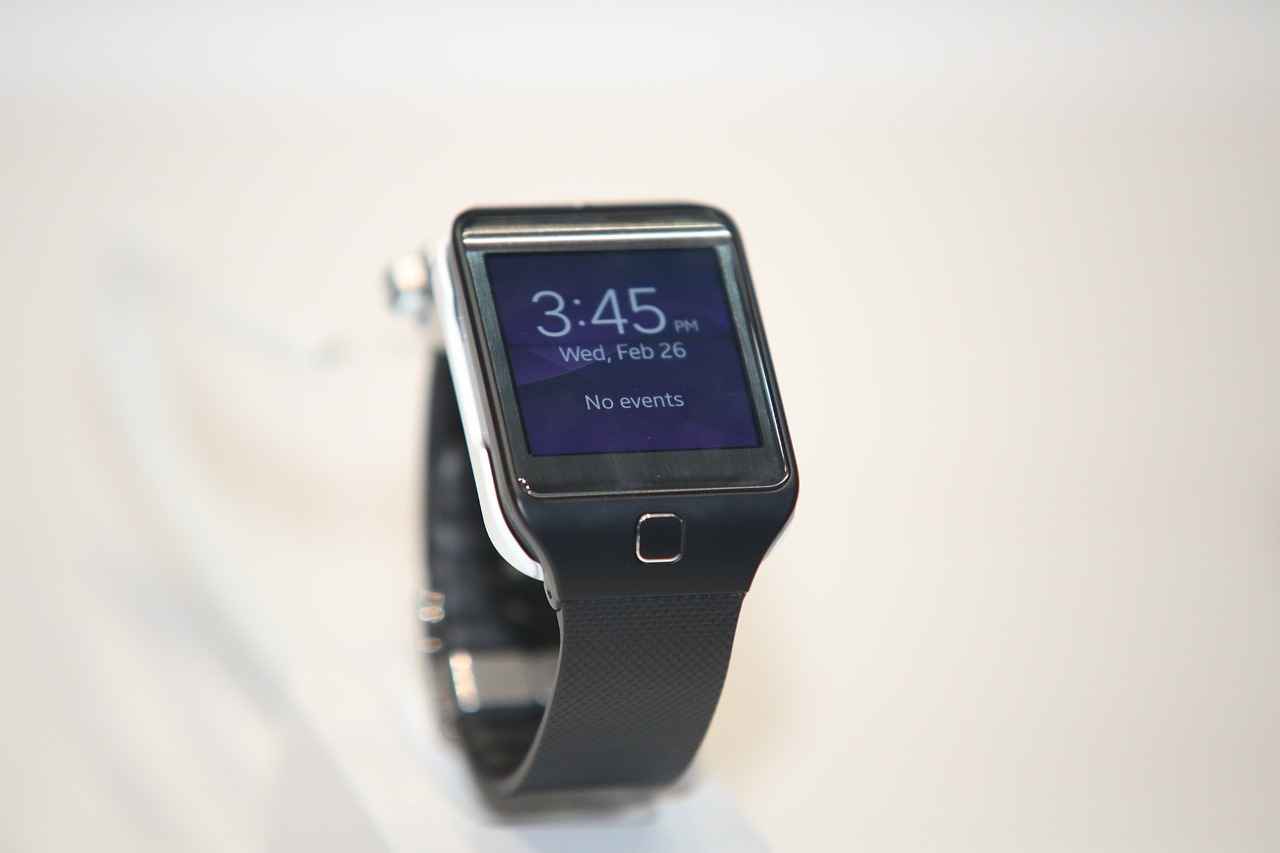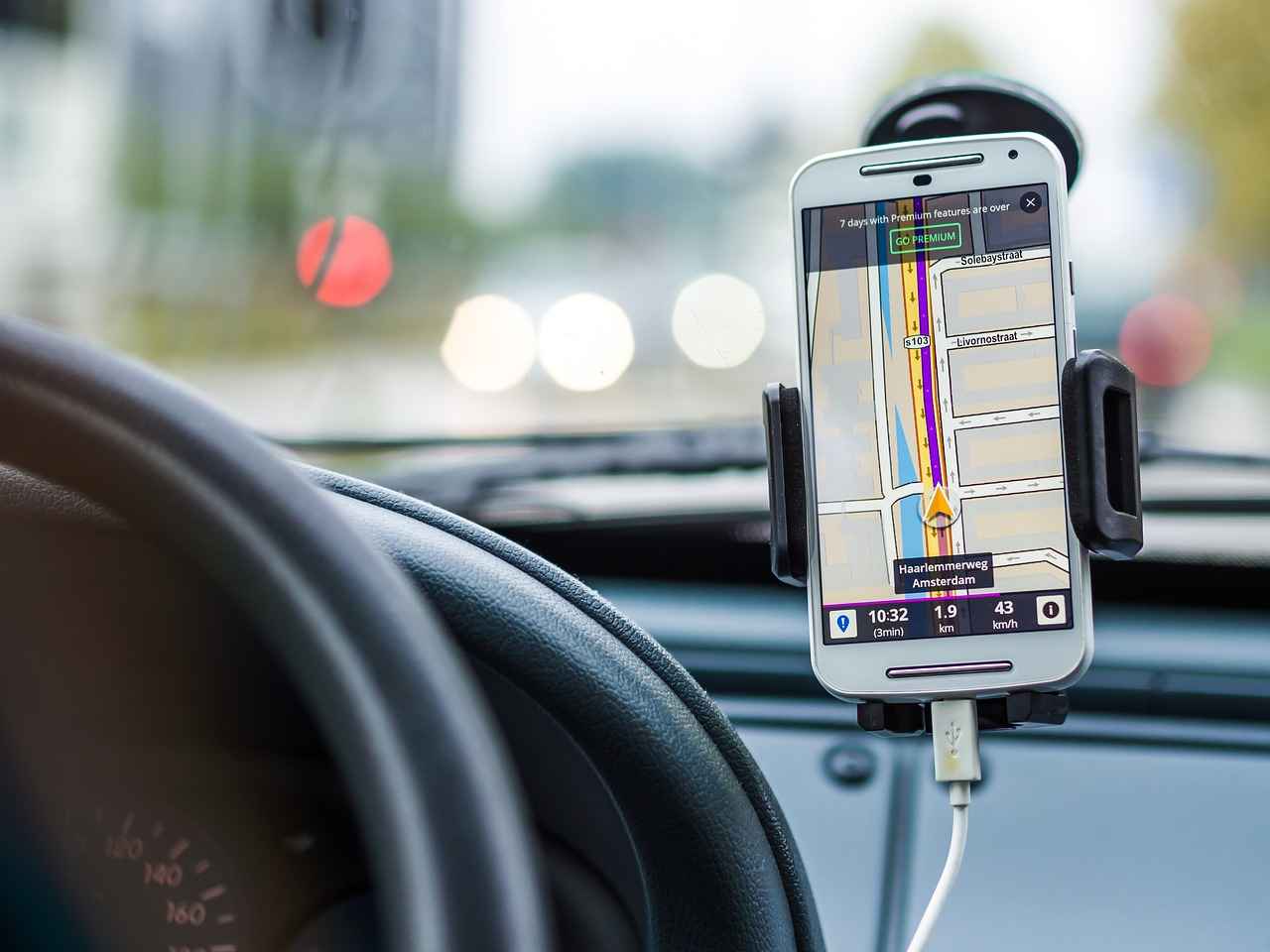As urban living evolves, the integration of smart home devices has become essential for enhancing convenience, security, and efficiency. These innovations not only simplify daily tasks but also transform your living space into a connected haven. Below, we explore a variety of smart home devices that are perfect for modern city dwellers.
- Smart Thermostats: These devices learn your schedule and preferences, optimizing energy use and enhancing comfort. With remote control capabilities, they are ideal for busy lifestyles.
- Smart Security Systems: Featuring cameras, motion detectors, and alarms, these systems provide real-time monitoring, ensuring peace of mind in bustling urban environments.
- Smart Lighting Solutions: Control your home’s ambiance through apps or voice commands. These systems adjust brightness based on occupancy, promoting energy efficiency.
- Smart Home Hubs: Centralize control of all your smart devices with a hub, enabling seamless integration and automation for a cohesive smart home experience.
- Smart Appliances: From refrigerators to ovens, these devices enhance kitchen efficiency and can be monitored remotely, making meal prep easier for busy urbanites.
- Smart Climate Control Devices: Maintain a healthy indoor environment with air purifiers and humidifiers that can be adjusted remotely, ensuring optimal air quality.
- Smart Entertainment Systems: Integrate streaming services and home theater technologies for a seamless viewing experience, controlled via apps or voice commands.
- Smart Gardening Tools: Perfect for urban dwellers, these tools help maintain indoor and balcony gardens, making gardening accessible in limited spaces.
- Smart Water Management Systems: Monitor water usage and detect leaks to promote conservation and prevent damage in urban households.
- Smart Home Health Devices: Fitness trackers and health monitors encourage wellness and can be integrated into your smart home for comprehensive health management.
In conclusion, adopting smart home devices significantly enhances the quality of life in urban areas. By embracing these technologies, you can create a more efficient, secure, and enjoyable living space in a smart city.

1. Smart Thermostats
Smart thermostats have revolutionized the way we manage our home heating and cooling systems. By utilizing advanced technology, these devices learn your daily routines and preferences, allowing them to optimize energy usage effectively. This not only results in significant cost savings on energy bills but also enhances overall comfort within your living space.
One of the standout features of smart thermostats is their ability to adapt to your lifestyle. For instance, when you leave for work, the thermostat can automatically adjust the temperature to save energy. Upon your return, it can pre-heat or cool your home to your preferred settings, ensuring you step into a comfortable environment. This level of customization is particularly beneficial for busy city dwellers who may have unpredictable schedules.
Moreover, smart thermostats can be controlled remotely through mobile apps. This feature allows you to adjust settings from anywhere, whether you’re at work, on vacation, or simply out running errands. Imagine being able to turn on your heating system on a chilly day before you arrive home, or adjusting your air conditioning during a heatwave—all at your fingertips.
In addition to convenience, smart thermostats often come equipped with energy usage reports. These reports provide insights into your heating and cooling habits, helping you identify areas where you can improve efficiency. By making informed decisions based on this data, you can further reduce your energy consumption and environmental impact.
Overall, investing in a smart thermostat is a step towards a more sustainable and efficient home. With their ability to learn, adapt, and provide remote access, they are an indispensable tool for modern urban living.

2. Smart Security Systems
Smart Security Systems are becoming essential in modern homes, especially in urban environments where safety is a top priority. These innovative systems integrate advanced technologies to protect your property and provide peace of mind.
With the increasing rate of urbanization, the need for effective security solutions has never been more critical. Smart security systems include a range of devices such as security cameras, motion detectors, and alarms, all designed to work together to create a comprehensive security network.
- Real-Time Monitoring: Smart security systems allow homeowners to monitor their properties in real-time through mobile applications. This feature enables you to keep an eye on your home from anywhere, whether you’re at work or on vacation.
- Instant Alerts: These systems provide instant notifications for any unusual activity, ensuring that you are always informed about your home’s security status. Alerts can include anything from motion detection to unauthorized entry attempts.
- Remote Access: Many smart security systems offer remote access capabilities, allowing you to control and manage your security devices from your smartphone or tablet. This feature provides added convenience and flexibility.
One popular component of smart security systems is the video doorbell. This device allows you to see and communicate with visitors at your door via your smartphone, enhancing your home’s security. With features like HD video, two-way audio, and night vision, video doorbells provide a comprehensive view of your entrance at any time.
Moreover, integrating smart locks into your security system adds another layer of protection. Smart locks offer keyless entry and can be managed remotely, making it easy to grant access to trusted individuals while keeping unwanted guests out.
In conclusion, smart security systems are an invaluable investment for homeowners looking to enhance their property’s safety. With the ability to monitor, alert, and control your home’s security from anywhere, these systems provide peace of mind in an increasingly busy urban landscape.
2.1. Video Doorbells
Video Doorbells have revolutionized home security by combining advanced technology with user-friendly features. These devices allow homeowners to not only see but also communicate with visitors at their doorstep from anywhere using their smartphones. This capability adds a significant layer of security and convenience, particularly in urban areas where foot traffic is high.
When someone rings the doorbell, homeowners receive a notification on their smartphone, allowing them to view a live video feed of the front door. This feature is especially useful for those who may not be at home, as it enables them to verify the identity of visitors and even speak to them via two-way audio. This interaction can deter potential intruders and provide peace of mind.
Key Features of Video Doorbells
- High Definition Video: Most video doorbells come equipped with HD cameras that provide clear visuals, ensuring you can see who is at your door.
- Two-Way Audio: This feature allows for direct communication, making it possible to speak with delivery personnel or guests without opening the door.
- Night Vision: Many models include night vision capabilities, ensuring visibility even in low-light conditions.
- Motion Detection: Video doorbells can alert homeowners when motion is detected, even if the doorbell is not pressed.
Popular Video Doorbell Brands
Several brands dominate the market, offering various models to suit different needs:
- Ring: Known for its user-friendly app and extensive features.
- Nest: Offers integration with other smart home devices and excellent video quality.
- Arlo: Provides advanced security features and high-resolution video.
In summary, video doorbells are an essential component of modern home security systems. They not only enhance safety but also offer unparalleled convenience for homeowners in busy urban settings. By integrating these devices into your home, you can enjoy peace of mind knowing that you can monitor your entrance from anywhere.
2.1.1. Features of Video Doorbells
Video doorbells have revolutionized home security by providing a convenient way to monitor your front door. Their advanced features enhance safety and ease of use, making them an essential addition to any smart home. Below, we explore the key functionalities that make video doorbells a popular choice among homeowners.
| Feature | Description |
|---|---|
| HD Video | Most video doorbells come equipped with high-definition video capabilities, ensuring clear and detailed images of visitors. This feature allows homeowners to identify guests or potential intruders with ease. |
| Two-Way Audio | With built-in speakers and microphones, video doorbells enable two-way communication. This means you can speak to visitors directly through your smartphone, providing convenience when you are not at home. |
| Night Vision | Night vision capabilities ensure that your front door is monitored even in low-light conditions. This enhances security by providing visibility during nighttime or in poorly lit areas. |
| Motion Detection | Video doorbells often include motion sensors that trigger alerts on your smartphone when someone approaches your door. This proactive feature helps you stay informed about activity around your home. |
| Cloud Storage | Many models offer cloud storage options for recorded footage, allowing you to review past events at any time. This is particularly useful for keeping a record of visitors or suspicious activity. |
In conclusion, the combination of HD video, two-way audio, night vision, and other innovative features makes video doorbells an indispensable tool for enhancing home security. By integrating these devices into your smart home system, you can monitor your front door effortlessly and ensure peace of mind, regardless of your location.
2.1.2. Popular Video Doorbell Brands
Popular Video Doorbell Brands have become vital components of modern home security systems, especially for urban homeowners seeking convenience and safety. With the rise of smart home technology, brands like Ring, Nest, and Arlo offer a wide range of models tailored to different needs and budgets. Below, we explore these brands and their key features, helping you make an informed decision when enhancing your home security.
- Ring: Known for its user-friendly interface and robust features, Ring offers various models that include high-definition video, night vision, and motion detection. Their integration with Amazon Alexa allows for seamless voice control, making it a popular choice among tech-savvy homeowners.
- Nest: A subsidiary of Google, Nest video doorbells are designed with sleek aesthetics and advanced technology. They provide features such as facial recognition and 24/7 streaming, allowing users to monitor their front door from anywhere via the Google Home app.
- Arlo: Arlo is celebrated for its high-quality video and extensive range of smart home products. Their video doorbells offer features like two-way audio and customizable motion zones, ensuring that users have complete control over their home security.
Each of these brands has unique offerings that cater to various preferences and requirements. When choosing a video doorbell, consider factors such as video quality, installation ease, and integration with other smart devices. This will help you select the best option for your smart home setup.
In conclusion, investing in a video doorbell from a reputable brand not only enhances your home security but also provides peace of mind. With options available for every budget, urban homeowners can easily find a solution that fits their lifestyle and security needs.
2.2. Smart Locks
Smart Locks have revolutionized home security, particularly in the context of smart cities. These innovative devices offer a seamless blend of convenience and safety, making them an essential component of modern urban living.
With keyless entry options, smart locks eliminate the need for traditional keys, allowing homeowners to unlock their doors using smartphones or biometric data such as fingerprints. This not only enhances security but also provides a hassle-free experience for residents who may be carrying groceries or managing children.
Moreover, smart locks offer remote access, enabling homeowners to grant entry to guests or service providers even when they are not at home. This feature is particularly beneficial in urban environments where busy lifestyles often prevent residents from being physically present to manage access. For instance, if a friend needs to drop off a package or a maintenance worker requires access, homeowners can unlock the door from anywhere using an app.
In addition to convenience, smart locks enhance security through features such as real-time alerts and activity logs. Homeowners can receive notifications whenever someone enters or exits their home, providing peace of mind and the ability to monitor who is coming and going. This is especially important in densely populated areas where security concerns are heightened.
| Feature | Benefit |
|---|---|
| Keyless Entry | No more lost keys, easier access |
| Remote Access | Control access from anywhere |
| Real-Time Alerts | Stay informed about home activity |
| Activity Logs | Track who enters and exits |
In conclusion, smart locks provide an essential layer of security and convenience for residents in smart cities. By integrating cutting-edge technology into everyday life, these devices not only simplify home management but also enhance overall safety, making them a wise investment for urban dwellers.

3. Smart Lighting Solutions
Smart lighting solutions have revolutionized the way we illuminate our homes, offering a blend of convenience, energy efficiency, and enhanced security. With the ability to control lighting through apps or voice commands, these systems allow homeowners to create the perfect ambiance for any occasion.
3.1. How Smart Lighting Works
At the core of smart lighting technology is connectivity. Most smart lighting systems operate through Wi-Fi or Bluetooth, enabling users to manage their lights remotely. You can adjust brightness, change colors, and set schedules to automate lighting based on your daily routine. For instance, lights can dim when you’re watching a movie or brighten when you enter a room, enhancing both comfort and energy savings.
3.2. Energy Efficiency Benefits
One of the most significant advantages of smart lighting is its potential to save energy. By utilizing sensors to detect occupancy, these systems can automatically turn off lights in unoccupied spaces. This feature not only reduces electricity bills but also contributes to a more sustainable lifestyle, making it an ideal choice for environmentally-conscious homeowners.
3.3. Enhancing Home Security
Smart lighting can also play a crucial role in home security. Automated lighting schedules can simulate your presence at home, deterring potential intruders. For example, you can program your lights to turn on and off at different times, giving the impression that someone is home even when you’re away.
3.4. Popular Smart Lighting Brands
- Philips Hue: Known for its extensive range of color-changing bulbs and smart features.
- LIFX: Offers bright, vibrant colors and smart integrations without the need for a hub.
- Wyze: Budget-friendly options that provide essential smart lighting features.
3.5. Conclusion
In conclusion, smart lighting solutions not only enhance the ambiance of your home but also contribute to energy savings and security. As technology continues to evolve, investing in smart lighting can significantly improve your quality of life, making your home more efficient and enjoyable.
3.1. Benefits of Smart Lighting
Smart lighting systems have revolutionized the way we illuminate our homes, offering a range of benefits that enhance both security and energy efficiency. By utilizing advanced technology, these systems provide homeowners with the ability to control their lighting remotely, create schedules, and even customize settings to suit their preferences.
- Enhanced Home Security: One of the most significant advantages of smart lighting is its ability to improve home security. Automated lighting schedules can simulate your presence at home, deterring potential burglars. For instance, lights can be programmed to turn on and off at specific times, creating the illusion that someone is home, even when you are away.
- Energy Efficiency: Smart lighting solutions are designed to reduce energy consumption. By utilizing LED bulbs and features like motion sensors, these systems can automatically adjust brightness based on occupancy, ensuring that lights are only on when needed. This not only helps in lowering electricity bills but also contributes to environmental sustainability.
- Convenience and Control: With smart lighting, homeowners can control their lights through mobile apps or voice commands, providing unparalleled convenience. Whether you’re relaxing on the couch or coming home with your hands full, adjusting the lighting is just a tap or a voice command away.
- Customizable Ambiance: Smart lighting allows users to customize the ambiance of their spaces. Whether you prefer warm lighting for a cozy evening or bright lights for a productive work session, these systems can adapt to your needs, enhancing the overall atmosphere of your home.
Brands like Philips Hue and LIFX offer a variety of smart lighting products, including color-changing bulbs and dimmable options, catering to different styles and preferences. These products not only enhance the aesthetic appeal of your home but also provide practical benefits that align with modern urban living.
In conclusion, the integration of smart lighting into your home can significantly enhance both security and energy efficiency. By leveraging technology, homeowners can enjoy a more convenient, customizable, and sustainable living environment.
3.2. Popular Smart Lighting Brands
In today’s rapidly evolving technological landscape, smart lighting solutions have become essential for modern homes, especially for those living in urban environments. Brands like Philips Hue and LIFX lead the market, offering a wide range of products designed to enhance both ambiance and functionality.
- Philips Hue: Known for its extensive range of color-changing bulbs and smart lighting systems, Philips Hue allows users to customize their lighting experience. With features like voice control and automation, it caters to various preferences, making it a popular choice among homeowners.
- LIFX: This brand stands out with its vibrant color options and easy setup process. LIFX bulbs connect directly to Wi-Fi, eliminating the need for a hub. Their products are designed for energy efficiency and can be controlled via smartphone apps, providing flexibility in managing home lighting.
- Wyze: A budget-friendly option, Wyze offers smart bulbs that integrate seamlessly with other smart home devices. Their affordable pricing and user-friendly app make them a great choice for those new to smart lighting.
- TP-Link Kasa: Known for reliability, TP-Link’s Kasa smart bulbs offer features like scheduling and remote access. They are compatible with popular voice assistants, enhancing the user experience.
- Sengled: This brand focuses on innovative lighting solutions, including bulbs with built-in speakers and security features. Sengled products are known for their affordability and ease of use.
With these brands leading the way, consumers can find smart lighting solutions that not only fit their personal style but also enhance the overall functionality of their homes. As smart technology continues to advance, the options for customizing lighting will only expand, making it easier to create the perfect atmosphere in any living space.

4. Smart Home Hubs
Smart home hubs serve as the backbone of a modern smart home, acting as a central control system for all your connected devices. These hubs enable seamless integration and automation, allowing homeowners to manage multiple gadgets from a single interface. By simplifying the management of various smart devices, they enhance the overall user experience and efficiency.
One of the primary advantages of smart home hubs is their ability to unify different devices, regardless of brand or protocol. This interoperability means that whether you have smart lights from one manufacturer, a thermostat from another, or security cameras from yet another brand, you can control them all through the hub. This feature not only saves time but also reduces the complexity associated with managing multiple apps and systems.
Moreover, smart home hubs often come equipped with advanced features such as voice control, allowing users to interact with their devices using simple voice commands. This hands-free operation is particularly beneficial for busy households, enabling users to adjust settings without needing to physically interact with their devices.
| Feature | Description |
|---|---|
| Voice Control | Control devices using voice commands through platforms like Alexa or Google Assistant. |
| Remote Access | Manage your devices from anywhere using a smartphone app. |
| Automation | Set schedules and automate actions based on time or triggers. |
Additionally, smart home hubs can facilitate automation routines. For example, you can set your lights to turn on automatically when you arrive home or adjust your thermostat based on the time of day. This level of customization not only enhances convenience but also contributes to energy savings.
In terms of popular options, brands like Amazon Echo, Google Nest Hub, and Samsung SmartThings are leading the market. Each of these hubs offers unique features, ensuring compatibility with a wide range of smart devices, thus catering to different user needs and preferences.
In conclusion, investing in a smart home hub is a wise choice for anyone looking to enhance their smart living experience. By providing a centralized control point for all devices, these hubs simplify home management, improve energy efficiency, and offer greater convenience, making them an essential component of modern urban living.
4.1. Features of Smart Home Hubs
Smart home hubs play a pivotal role in creating a seamless and integrated smart home experience. These devices act as the central command center for various smart gadgets, allowing users to control and automate their home environment effortlessly. Below, we explore the key features that make smart home hubs essential for modern living.
- Voice Command Support: Most smart home hubs come equipped with voice recognition technology, enabling users to control their devices hands-free. This feature enhances convenience, allowing users to adjust settings, play music, or check the weather simply by speaking.
- Remote Access: With mobile applications, users can manage their smart devices from anywhere. Whether at work or on vacation, remote access ensures that you can monitor security cameras, adjust thermostats, or turn off lights, providing peace of mind.
- Device Compatibility: Smart home hubs are designed to work with a wide range of devices, including lights, locks, cameras, and appliances. This compatibility is crucial for creating a cohesive smart home ecosystem, allowing different brands and technologies to function together.
- Automation Capabilities: Users can set up automated routines that trigger multiple actions with a single command. For instance, a “Good Night” routine could turn off lights, lock doors, and adjust the thermostat, making life easier and more efficient.
- Integration with Smart Assistants: Many hubs are compatible with popular smart assistants like Amazon Alexa and Google Assistant, enhancing their functionality. This integration allows for advanced voice commands and control over a broader range of devices.
In conclusion, the features of smart home hubs significantly contribute to a more connected and efficient living environment. By supporting voice commands, offering remote access, ensuring compatibility with various devices, enabling automation, and integrating with smart assistants, these hubs are indispensable for anyone looking to enhance their smart home experience.
4.2. Leading Smart Home Hub Brands
Leading Smart Home Hub Brands are crucial in transforming your living space into a fully integrated smart home. These hubs serve as the central command for your smart devices, allowing seamless control and automation. In this section, we will explore some of the top brands in the smart home hub market, highlighting their features and compatibility with various devices.
- Amazon Echo: The Amazon Echo is a versatile smart home hub that integrates with Alexa, Amazon’s voice assistant. It supports a wide range of devices, making it easy to control everything from lights to thermostats with simple voice commands. The Echo also offers music streaming and smart home routines that can be customized according to your needs.
- Google Nest Hub: The Google Nest Hub excels in providing a visual interface along with voice control through Google Assistant. It allows users to manage their smart home devices effortlessly, view important information at a glance, and even control compatible smart displays. The Nest Hub’s integration with Google services enhances its functionality, making it a popular choice for many households.
- Samsung SmartThings: Samsung SmartThings is renowned for its extensive compatibility with a wide range of smart devices from various manufacturers. This hub allows users to create customized automation scenarios, enhancing the overall smart home experience. Its robust app facilitates remote control and monitoring, making it an excellent option for tech-savvy users.
Other notable mentions include Apple HomeKit, which focuses on privacy and security, and Wink Hub, known for its user-friendly interface. Each of these brands offers unique features tailored to different user preferences, ensuring that you can find the perfect hub for your smart home ecosystem.
In conclusion, selecting the right smart home hub is essential for creating a cohesive and efficient smart home environment. With the variety of options available, consumers can choose a hub that best fits their lifestyle and device compatibility needs.

5. Smart Appliances
Smart Appliances are revolutionizing the way we manage our kitchens, making them more efficient and user-friendly. These high-tech devices are designed to integrate seamlessly into our busy lives, providing convenience that aligns perfectly with the fast-paced urban lifestyle.
With features such as connectivity for remote control and monitoring, smart appliances allow users to manage their cooking and food storage from anywhere. Imagine being able to preheat your oven while you’re still at the office or checking the contents of your refrigerator from the grocery store. This level of convenience is not just a luxury; it’s becoming a necessity for many urban dwellers.
- Enhanced Cooking Efficiency: Smart ovens come equipped with advanced features such as recipe integration and automatic cooking adjustments. They can guide you through the cooking process, ensuring that meals are prepared perfectly every time.
- Food Management: Smart refrigerators can track expiration dates and suggest recipes based on the ingredients you have on hand, minimizing food waste and saving you money.
- Energy Efficiency: Many smart appliances are designed with energy-saving features that optimize power usage, helping to reduce utility bills and environmental impact.
Notable brands like LG, Samsung, and Whirlpool are leading the charge in smart appliance technology, offering innovative solutions tailored to meet the needs of modern consumers. These brands are continuously enhancing their product lines with features that cater to the evolving demands of urban lifestyles.
In conclusion, smart appliances are not just about convenience; they represent a significant step towards a more efficient and sustainable future. As urban living continues to evolve, these devices will play an essential role in transforming our kitchens into connected, smart environments.
5.1. Benefits of Smart Appliances
In today’s fast-paced urban environment, smart appliances have emerged as essential tools for enhancing convenience and efficiency in our daily lives. These innovative devices are designed to streamline various tasks, particularly in the kitchen, where they can significantly transform cooking and food management.
Time-Saving Features: Smart appliances often come equipped with advanced features that allow for quick meal preparation. For instance, smart ovens can preheat remotely, and smart refrigerators can suggest recipes based on available ingredients. This functionality not only saves time but also encourages healthier eating habits by making cooking at home more accessible.
Waste Reduction: One of the critical advantages of smart appliances is their ability to minimize food waste. Many smart refrigerators monitor expiration dates and send alerts when items are nearing spoilage. This proactive approach helps households consume food before it goes bad, contributing to sustainability efforts.
Energy Efficiency: Smart appliances typically include energy-efficient settings that can significantly lower electricity usage. For example, smart dishwashers and washing machines optimize water and energy consumption based on load size and type. This not only reduces utility bills but also lessens the environmental impact, making them ideal for eco-conscious urban dwellers.
Remote Monitoring and Control: With the integration of smart technology, these appliances can be controlled and monitored via smartphone apps. This feature allows users to start cooking or check the status of their appliances from anywhere, providing unmatched convenience for busy individuals.
Enhanced User Experience: Many smart appliances come with user-friendly interfaces and voice control capabilities, making them accessible to everyone in the household. This enhances the cooking experience, allowing for a more enjoyable and efficient process.
In summary, the benefits of smart appliances extend beyond mere convenience. They offer significant advantages in terms of time savings, waste reduction, energy efficiency, remote control, and user experience, making them a valuable addition to any urban household.
5.2. Notable Smart Appliance Brands
In the rapidly evolving landscape of smart home technology, several brands stand out for their innovative approaches to smart appliances. These appliances are not only designed to enhance convenience but also to promote energy efficiency and sustainability. Here, we explore some of the leading brands in this sector:
- LG: Known for its cutting-edge technology, LG offers a range of smart appliances, including refrigerators, washing machines, and ovens. Their ThinQ technology allows users to control appliances remotely, monitor energy usage, and receive maintenance alerts.
- Samsung: Samsung’s smart appliances integrate seamlessly with the SmartThings ecosystem, enabling users to manage their home devices through a single app. Their innovative features, such as the Family Hub refrigerator, provide meal planning and grocery management tools.
- Whirlpool: Whirlpool focuses on user-friendly smart appliances that simplify household tasks. Their smart washers and dryers come equipped with features that allow users to start or stop cycles remotely and receive notifications when laundry is done.
- GE Appliances: General Electric offers a wide variety of smart kitchen and laundry appliances. Their GE Appliances Kitchen app allows for remote control and monitoring, making meal prep more efficient.
- Bosch: Renowned for its quality and reliability, Bosch smart appliances offer features that enhance cooking and cleaning experiences. Their smart dishwashers and ovens can be controlled via the Home Connect app.
These brands are at the forefront of smart appliance innovation, continuously developing products that cater to the needs of modern consumers. By integrating advanced technology with user-friendly features, they make daily tasks easier and more efficient.
As smart home technology continues to advance, these brands are likely to remain leaders in the market, providing consumers with cutting-edge solutions that enhance everyday living.

6. Smart Climate Control Devices
Smart Climate Control Devices play a vital role in maintaining a healthy indoor environment, especially in urban settings where outdoor air quality can be compromised. These innovative devices, which include air purifiers and humidifiers, are designed to enhance the air quality in your home, making it more comfortable and healthier for you and your family.
One of the key benefits of smart climate control devices is their ability to be monitored and adjusted remotely. This feature allows users to control their air quality from anywhere, ensuring that your home remains at an optimal level of comfort, regardless of your location. Whether you’re at work or on vacation, you can easily check air quality levels and make necessary adjustments through your smartphone or tablet.
In densely populated cities, maintaining good air quality is crucial. Urban environments often face challenges such as pollution from traffic and industrial activities. Smart climate control devices can help mitigate these effects by filtering out harmful particles and regulating humidity levels. This is particularly important for individuals with respiratory issues or allergies, as these devices can significantly improve indoor air quality.
Several reputable brands are at the forefront of climate control technology. Brands like Dyson and Honeywell offer advanced air quality solutions that feature smart technology capable of tracking and improving indoor conditions effectively. These devices not only purify the air but also monitor levels of pollutants and humidity, ensuring a healthier living space.
- Real-time Monitoring: Many devices come equipped with sensors that provide real-time data on air quality, allowing users to make informed decisions.
- Automated Adjustments: Smart devices can automatically adjust their settings based on the detected air quality, ensuring optimal conditions without manual intervention.
- Integration with Smart Home Systems: These devices can often be integrated with other smart home systems, allowing for seamless automation and control.
In conclusion, smart climate control devices are essential tools for maintaining a comfortable and healthy indoor environment, especially in urban areas. By investing in these technologies, you can ensure that your home remains a sanctuary of clean air and optimal humidity, contributing to your overall well-being.
6.1. Importance of Air Quality in Urban Areas
In today’s fast-paced urban environments, maintaining good air quality is more important than ever. Densely populated cities often face challenges such as traffic congestion, industrial emissions, and construction activities that contribute to poor air conditions. As a result, the air we breathe can contain harmful pollutants, which have significant implications for public health and overall well-being.
Research indicates that prolonged exposure to polluted air can lead to serious health issues, including respiratory diseases, cardiovascular problems, and even decreased cognitive function. This makes it crucial for urban residents to take proactive measures to improve their indoor air quality.
Smart climate control devices, such as air purifiers and humidifiers, play a vital role in mitigating the effects of outdoor pollution. These devices can filter out harmful particles, allergens, and volatile organic compounds (VOCs), ensuring that the air inside homes remains clean and safe to breathe. Additionally, many modern air purifiers come equipped with smart technology that allows users to monitor air quality levels in real-time and adjust settings remotely.
Moreover, maintaining optimal indoor humidity levels can prevent the growth of mold and dust mites, both of which can exacerbate allergies and asthma. Smart humidifiers can automatically adjust their output based on the current humidity levels, providing a comfortable and healthy living environment.
In conclusion, prioritizing air quality in urban areas is essential for protecting health and enhancing quality of life. By utilizing smart climate control devices, residents can significantly improve their indoor air quality, creating a healthier home environment amidst the challenges of urban living.
6.2. Leading Brands in Climate Control Technology
Leading Brands in Climate Control Technology
In today’s world, where urban living often comes with challenges such as pollution and fluctuating weather conditions, maintaining a healthy indoor environment is essential. Climate control technology has evolved significantly, with brands like Dyson and Honeywell at the forefront, providing innovative solutions that enhance air quality and comfort in our homes.
Dyson: Revolutionizing Air Purification
Dyson is renowned for its cutting-edge technology and sleek design. Their air purifiers are equipped with smart sensors that detect pollutants and allergens, automatically adjusting their filtration systems to ensure optimal air quality. With features like HEPA filtration and real-time air quality monitoring, Dyson products not only purify the air but also provide valuable insights into the indoor environment.
Honeywell: Trusted Air Quality Solutions
Honeywell has a long-standing reputation for producing reliable and effective air quality solutions. Their smart air purifiers utilize advanced filtration technologies to trap dust, pollen, and other airborne contaminants. Many Honeywell models come with Wi-Fi connectivity, allowing users to monitor and control their devices remotely through mobile apps. This feature is particularly beneficial for busy urban dwellers who want to ensure their homes remain a safe haven.
| Brand | Key Features | Ideal For |
|---|---|---|
| Dyson | Smart sensors, HEPA filtration, real-time monitoring | Tech-savvy users, design-conscious homeowners |
| Honeywell | Wi-Fi connectivity, reliable filtration, mobile app control | Families, busy professionals |
In conclusion, both Dyson and Honeywell offer advanced climate control technologies that cater to diverse needs in urban settings. By investing in these brands, consumers can significantly improve their indoor air quality, contributing to overall health and well-being.

7. Smart Entertainment Systems
Smart Entertainment Systems have revolutionized the way we consume media, making it more accessible and enjoyable than ever. These systems seamlessly integrate various streaming services and home theater technologies to create a comprehensive entertainment experience. With the ability to control these systems via mobile apps or voice commands, users can enhance their leisure time effortlessly.
- Convenience: Smart entertainment systems allow users to access all their favorite streaming services in one place, eliminating the need to switch between devices or platforms.
- Personalization: Users can create customized playlists and recommendations based on their viewing habits, ensuring a tailored experience.
- Voice Control: Many systems support voice commands, making it easy to search for content or control playback without needing a remote.
- Integration: These systems can often connect with other smart home devices, such as smart lighting, to create an immersive viewing atmosphere.
| Brand | Key Features |
|---|---|
| Roku | Wide range of channels, user-friendly interface |
| Apple TV | Seamless integration with Apple devices, high-quality streaming |
| Sonos | Multi-room audio capabilities, superior sound quality |
When selecting a smart entertainment system, consider the following factors:
- Compatibility: Ensure the system works with your existing devices and services.
- Features: Look for systems that offer the functionalities you prioritize, such as voice control or multi-room audio.
- Price: Determine your budget and find a system that offers the best value for your needs.
In today’s fast-paced world, smart entertainment systems provide an essential upgrade to our viewing experiences. By integrating technology with entertainment, these systems not only enhance convenience but also allow for a highly personalized and enjoyable leisure time. With various options available, it’s easier than ever to find a solution that fits your lifestyle and preferences.
7.1. Benefits of Smart Entertainment
Smart entertainment systems have revolutionized the way we consume media, offering a plethora of options that cater to individual preferences. In an age where time is a valuable commodity, especially in urban settings, the convenience and personalization provided by these systems are unparalleled.
One of the primary benefits of smart entertainment is the ability to access a wide range of content from various platforms all in one place. Users can easily switch between streaming services such as Netflix, Hulu, and Amazon Prime without the hassle of changing devices. This seamless integration allows for a more enjoyable viewing experience, as users can curate their media libraries according to their tastes and moods.
Customization is another significant advantage. Smart entertainment systems often come with features that allow users to create personalized playlists, receive tailored recommendations, and even adjust settings based on their viewing habits. This level of personalization ensures that every user can find something that resonates with them, making downtime feel more rewarding.
Moreover, the ease of control is a game-changer. Most smart entertainment devices can be operated through voice commands or mobile applications, allowing users to navigate their content hands-free. This is particularly beneficial for busy individuals who may not have the time or inclination to search for shows or movies manually.
In addition, smart entertainment systems often support multi-user profiles, enabling different family members to maintain their own preferences and watch histories. This feature is especially appealing in urban households where multiple people share the same living space but have different tastes in entertainment.
Finally, the integration of smart home technology with entertainment systems enhances the overall experience. Users can synchronize their lighting and sound systems to create a home theater atmosphere, further enriching their media consumption.
In conclusion, smart entertainment options not only provide convenience and personalization but also elevate the overall media experience, making them a valuable addition to any urban dwelling.
7.2. Popular Smart Entertainment Brands
In today’s fast-paced digital world, having an efficient and enjoyable home entertainment system is essential. Brands like Roku, Apple TV, and Sonos have emerged as leaders in providing innovative smart entertainment solutions that cater to a variety of preferences. These brands enhance the overall home entertainment experience by integrating advanced technology and user-friendly interfaces.
- Roku: Known for its wide range of streaming devices, Roku offers users access to countless channels and streaming services. Its user interface is intuitive, making it easy for anyone to navigate and find their favorite content. Roku devices also support voice search, allowing for quick access to shows and movies.
- Apple TV: This brand brings a seamless integration of Apple services, including iTunes and Apple TV+. Apple TV devices are equipped with features like AirPlay, enabling users to stream content from their Apple devices effortlessly. The high-quality graphics and user-friendly interface make it a favorite among Apple enthusiasts.
- Sonos: Specializing in audio solutions, Sonos offers smart speakers that deliver high-quality sound throughout the home. With its multi-room audio capabilities, users can enjoy synchronized music in every room. The Sonos app allows for easy control and customization of sound settings, enhancing the listening experience.
These brands not only provide cutting-edge technology but also prioritize user experience, making them popular choices for consumers looking to elevate their home entertainment systems. By offering a variety of options, they cater to diverse preferences, ensuring that everyone can find a solution that fits their lifestyle.
In conclusion, as smart entertainment continues to evolve, investing in brands like Roku, Apple TV, and Sonos can significantly enhance your home viewing and listening experiences. Whether you’re streaming your favorite shows or enjoying music with friends, these brands provide the tools you need to create a connected and enjoyable entertainment environment.

8. Smart Gardening Tools
Smart Gardening Tools are revolutionizing the way urban dwellers engage with nature, especially in limited spaces like apartments and balconies. These innovative devices are designed to make gardening not only feasible but also enjoyable, regardless of the size of your living area.
Urban gardening can be challenging due to space constraints, but smart gardening tools offer a solution by:
- Monitoring Plant Health: Devices equipped with sensors can assess soil moisture, light levels, and temperature, providing real-time data on plant needs.
- Automating Watering: Smart irrigation systems can schedule watering based on weather forecasts and soil conditions, ensuring plants receive the right amount of water without manual effort.
- Enhancing Accessibility: These tools make gardening more approachable for beginners, providing guidance and reminders that help users stay engaged with their plants.
Several brands are leading the way in smart gardening technology:
- Parrot Flower Power: This sensor monitors sunlight, temperature, and moisture, sending alerts to your smartphone.
- Xiaomi’s Smart Plant Monitor: This device tracks the health of your plants and offers care tips through a user-friendly app.
- Gardena Smart System: A comprehensive solution that automates watering and integrates with weather data to optimize water usage.
To begin your smart gardening journey, consider the following steps:
- Assess Your Space: Determine how much space you have for gardening and what types of plants you want to grow.
- Choose the Right Tools: Invest in smart gardening tools that suit your needs and preferences.
- Monitor Progress: Use the app features to track plant health and adjust care as necessary.
In conclusion, smart gardening tools not only simplify the process of maintaining indoor and balcony gardens but also foster a deeper connection with nature. By embracing these technologies, urban residents can enjoy the benefits of gardening even in the smallest of spaces.
8.1. Benefits of Smart Gardening
In today’s urban environments, where space is often limited, smart gardening solutions are revolutionizing the way we approach gardening. These innovative tools and technologies offer numerous benefits that cater to both experienced gardeners and those just starting their green journey.
- Space Efficiency: Smart gardening tools are designed to maximize limited space. Vertical gardens, hydroponic systems, and smart pots allow urban dwellers to cultivate plants in small areas like balconies or rooftops.
- Automated Care: With features like automated watering systems and nutrient dispensers, these solutions reduce the time and effort required for plant care. This is perfect for busy city residents who may not have time for daily gardening tasks.
- Healthier Plants: Smart sensors monitor environmental conditions such as soil moisture, light levels, and temperature. This data helps ensure that plants receive optimal care, leading to healthier growth and better yields.
- Sustainability: Many smart gardening solutions promote sustainable practices, such as water conservation and organic gardening. By utilizing these tools, gardeners can minimize their environmental impact while enjoying the benefits of home-grown produce.
- Educational Resources: Smart gardening apps often come with built-in resources, tutorials, and community forums. This accessibility makes it easier for beginners to learn about plant care and gardening techniques.
In conclusion, smart gardening solutions not only enhance the enjoyment of gardening in urban settings but also promote sustainable practices that are essential for our environment. By integrating technology into gardening, individuals can create lush green spaces that contribute positively to their urban lifestyles.
8.2. Leading Brands in Smart Gardening
Leading Brands in Smart Gardening
In today’s urban landscape, where space is often limited, smart gardening tools have become essential for city residents looking to cultivate their own green spaces. These innovative devices not only simplify plant care but also enhance the overall gardening experience. Below, we explore some of the leading brands in smart gardening, highlighting their unique features and contributions to urban gardening.
| Brand | Key Features | Best For |
|---|---|---|
| Parrot | Wireless plant monitoring, soil analysis, and weather tracking | Tech-savvy gardeners |
| Xiaomi | Automated watering systems, smart plant sensors, and app integration | Budget-conscious consumers |
| Gardena | Smart irrigation solutions, easy installation, and mobile app control | Homeowners with larger gardens |
| Click and Grow | Self-watering planters, smart soil technology, and LED grow lights | Beginner gardeners |
| Smart Garden | Hydroponic systems, automatic light adjustments, and plant growth tracking | Indoor gardeners |
Each of these brands offers unique solutions to address the challenges of urban gardening. Parrot stands out for its advanced monitoring technology, providing gardeners with real-time data on their plants’ health. Meanwhile, Xiaomi offers affordable options that integrate seamlessly with smart home systems, making gardening accessible for everyone.
For those with larger outdoor spaces, Gardena provides comprehensive irrigation solutions that ensure plants receive the right amount of water without the hassle. Click and Grow simplifies the gardening process for beginners with its self-watering planters, while Smart Garden caters to indoor enthusiasts with hydroponic systems that require minimal maintenance.
As urban gardening continues to gain popularity, these brands are at the forefront, innovating tools that make it easier for city dwellers to enjoy the benefits of gardening. Whether you are a seasoned gardener or just starting, investing in smart gardening tools can significantly enhance your plant care experience.

9. Smart Home Energy Management Systems
Smart Home Energy Management Systems play a crucial role in today’s eco-conscious urban living. These innovative systems are designed to monitor and manage energy consumption efficiently, providing users with valuable insights that can lead to significant savings on utility bills while minimizing their environmental footprint.
As urban areas continue to grow, the demand for energy rises, making it increasingly important for residents to adopt sustainable practices. Smart energy management systems empower homeowners to understand their energy usage patterns, helping them identify areas where they can reduce consumption and implement more efficient solutions.
These systems utilize a combination of smart meters, sensors, and software applications to track energy usage in real-time. Users can access this data via smartphone apps or web platforms, allowing them to monitor their energy consumption from anywhere. Key features often include:
- Real-time monitoring of energy usage
- Insights into peak usage times
- Alerts for unusual spikes in consumption
- Recommendations for energy-saving actions
Investing in these systems not only helps reduce energy bills but also contributes to sustainability efforts. Some of the primary benefits include:
- Cost Savings: By understanding and optimizing energy usage, homeowners can significantly lower their monthly energy expenses.
- Environmental Impact: Reducing energy consumption leads to lower carbon emissions, contributing to a healthier planet.
- Increased Awareness: Users become more conscious of their energy habits, fostering a culture of sustainability within the household.
Several companies are leading the way in smart energy management technology. Brands like Sense and Neurio provide advanced solutions that cater to various needs, offering features that empower users to take control of their energy consumption.
In conclusion, Smart Home Energy Management Systems are an essential tool for urban residents aiming to embrace sustainability. By providing actionable insights and fostering a greater understanding of energy usage, these systems not only help in reducing bills but also play a pivotal role in promoting environmental responsibility.
9.1. Importance of Energy Management
In today’s rapidly urbanizing world, effective energy management has become a critical necessity. Urban areas are characterized by high energy consumption due to dense populations, extensive infrastructure, and a variety of services. As a result, implementing smart energy management systems is vital for optimizing energy use and promoting sustainability.
Smart energy management systems utilize advanced technologies to monitor, analyze, and control energy consumption in real-time. These systems not only help identify usage patterns but also offer insights that enable users to make informed decisions about their energy use. By leveraging data analytics, these systems can highlight peak usage times, helping residents adjust their consumption habits accordingly.
Furthermore, energy management systems contribute significantly to cost savings. By optimizing energy efficiency, households can lower their utility bills while reducing their carbon footprint. This is particularly important in urban settings where energy costs can be prohibitively high.
| Benefits of Smart Energy Management | Description |
|---|---|
| Cost Savings | Reduces monthly energy bills through efficient usage. |
| Environmental Impact | Decreases carbon emissions by promoting sustainable practices. |
| Real-time Monitoring | Provides instant feedback on energy usage, allowing for immediate adjustments. |
| Data Insights | Offers valuable analytics to help users understand their consumption patterns. |
Moreover, as cities strive for sustainability, energy management systems align with green initiatives and regulations aimed at reducing environmental impact. By adopting these smart technologies, urban residents can play a proactive role in fostering a more sustainable future.
In conclusion, the importance of energy management in urban areas cannot be overstated. As cities continue to grow, embracing smart energy solutions will be essential for enhancing efficiency, reducing costs, and promoting a healthier planet.
9.2. Notable Energy Management Brands
In the realm of smart energy management, brands like Sense and Neurio have emerged as leaders, offering innovative solutions that empower users to take control of their energy consumption. These brands provide advanced technologies designed to deliver real-time data and actionable insights, enabling households to make informed decisions regarding their energy use.
- Sense: This brand utilizes a unique energy monitoring system that tracks electricity usage in real-time. By analyzing the electrical signatures of various devices, Sense provides users with detailed insights into their energy consumption patterns. This information helps users identify energy hogs and optimize usage, ultimately leading to reduced electricity bills.
- Neurio: Neurio offers a comprehensive energy monitoring solution that connects directly to your home’s electrical panel. It provides users with instant feedback on energy usage, allowing for easy tracking of consumption trends. Neurio’s system is designed to help users understand their energy habits and make adjustments to improve efficiency.
Both brands emphasize the importance of sustainability and energy efficiency in today’s eco-conscious world. By leveraging their technologies, users can not only save money but also contribute to a greener planet. These solutions are particularly beneficial in urban settings, where energy consumption can be high due to the density of households and businesses.
In addition to Sense and Neurio, several other brands are making strides in the energy management sector:
- EnergyHub: This platform connects various smart devices, allowing users to manage their energy consumption from a single app.
- Emporia: Known for its affordable energy monitoring solutions, Emporia provides users with insights that help them reduce energy waste.
- Wattwatchers: This brand offers advanced monitoring solutions that cater to both residential and commercial applications, providing detailed analytics for energy management.
As the demand for smart energy solutions continues to grow, these brands are at the forefront of innovation, helping users navigate their energy consumption in a smarter, more efficient way.

10. Smart Water Management Systems
Smart Water Management Systems are becoming increasingly essential in urban environments, where water scarcity is a growing concern. These innovative systems not only help monitor water usage but also play a crucial role in detecting leaks and promoting conservation efforts. By integrating technology into water management, urban households can significantly reduce waste and prevent potential damage from leaks.
As cities expand and populations grow, the demand for water increases. Smart water management systems address this challenge by providing real-time data on water consumption, enabling homeowners to make informed decisions about their usage. This real-time monitoring helps identify unusual spikes in water usage, which could indicate leaks or inefficiencies in the plumbing system.
- Leak Detection: Smart systems utilize sensors to detect leaks early, allowing for prompt repairs and minimizing water loss.
- Usage Analytics: Homeowners can track their water consumption patterns, helping them identify areas where they can conserve.
- Automated Alerts: Users receive notifications on their smartphones about unusual water usage, ensuring they can act quickly.
In addition to promoting conservation, these systems can prevent costly damages associated with water leaks. Water damage can lead to structural issues and mold growth, which are expensive to remediate. By investing in smart water management technology, urban dwellers can protect their homes and save money in the long run.
Leading brands such as Flume and Moen are at the forefront of this technology, offering solutions that are user-friendly and effective. Their systems often come equipped with features like mobile app integration, allowing users to monitor their water usage from anywhere.
In conclusion, as urban households face increasing water scarcity, adopting smart water management systems is a proactive step towards sustainability. These systems not only enhance conservation efforts but also protect homes from potential damage, making them a vital investment for modern city living.
10.1. Benefits of Smart Water Management
In today’s urban landscape, the demand for water is ever-increasing, and managing this precious resource effectively is crucial. Smart water management systems play a pivotal role in promoting sustainability and efficiency in water usage, especially in densely populated areas.
- Waste Reduction: These systems are designed to detect leaks and monitor water consumption in real-time. By identifying issues early, they help prevent water wastage, saving both water and money.
- Optimized Usage: Smart water management systems provide insights into usage patterns, allowing homeowners to adjust their consumption habits. This optimization leads to significant reductions in water bills and fosters environmentally-friendly practices.
- Automated Monitoring: With features such as automated alerts and remote monitoring, users can stay informed about their water usage and receive notifications about potential leaks or unusual consumption patterns, enhancing peace of mind.
- Environmental Impact: By reducing water waste, these systems contribute to broader sustainability efforts. They help in conserving local water supplies, which is particularly important in areas facing water scarcity.
- Integration with Smart Home Systems: Many smart water management solutions can be integrated with existing smart home systems, allowing for seamless control and monitoring alongside other smart devices.
In conclusion, adopting smart water management systems not only benefits individual households by reducing costs but also supports community-wide efforts towards conservation and sustainability. As urban residents become more environmentally conscious, these technologies are becoming essential tools in the quest for a greener future.
10.2. Leading Brands in Water Management Technology
In today’s world, where water scarcity is becoming an increasingly pressing issue, innovative solutions are essential for efficient water management in urban settings. Brands like Flume and Moen are at the forefront of this technological revolution, offering advanced systems that not only monitor but also control water usage effectively.
Flume is known for its smart water monitoring system that provides real-time data on water consumption. By attaching a sensor to the water meter, Flume allows homeowners to track their usage via a mobile app. This feature enables users to identify leaks quickly, set usage goals, and receive notifications when unusual water flow is detected. Such proactive measures not only help in conserving water but also in reducing utility bills.
Moen, on the other hand, offers a range of smart faucets and showerheads equipped with technology that enhances water efficiency. Their Moen Smart Water Network allows users to monitor water usage patterns and adjust settings remotely. This is particularly useful for urban households where water conservation is critical due to higher demand and limited resources.
| Brand | Key Features | Benefits |
|---|---|---|
| Flume | Real-time monitoring, leak detection, mobile app integration | Conserves water, reduces bills, prevents damage |
| Moen | Smart faucets, usage tracking, remote control | Enhances efficiency, promotes conservation, user-friendly |
Both Flume and Moen exemplify how technology can play a significant role in sustainable water management. By integrating these smart solutions into urban homes, residents can not only contribute to environmental preservation but also enjoy the convenience of modern technology. As urban areas continue to grow, embracing such innovations will be crucial for ensuring a sustainable future.

11. Smart Home Health Devices
Smart Home Health Devices are revolutionizing the way we approach wellness and fitness in our daily lives. These innovative gadgets, such as fitness trackers and health monitors, not only promote active lifestyles but also integrate seamlessly into smart home systems for comprehensive health management.
In today’s fast-paced urban environments, maintaining a healthy lifestyle can be challenging. Smart health devices offer valuable insights into our fitness levels, sleep patterns, and overall well-being. They help users set and achieve health goals by providing real-time data and personalized feedback.
- Activity Tracking: Monitor daily steps, calories burned, and exercise routines.
- Heart Rate Monitoring: Keep track of your heart rate during workouts and throughout the day.
- Sleep Analysis: Gain insights into sleep quality and patterns, helping to improve rest.
- Integration with Health Apps: Sync data with popular health applications for a comprehensive view of your health.
Several brands stand out in the smart health device market:
- Fitbit: Known for its wide range of fitness trackers and smartwatches.
- Withings: Offers health monitors that track weight, heart rate, and more.
- Garmin: Focuses on fitness wearables designed for athletes and outdoor enthusiasts.
Integrating smart health devices into your smart home system can enhance health management significantly. These devices can:
- Provide Alerts: Receive notifications about health metrics that need attention.
- Automate Wellness Routines: Program reminders for hydration, exercise, or medication.
- Enhance Data Sharing: Share health data with healthcare providers for better management.
As technology continues to advance, smart health devices will play an increasingly vital role in promoting wellness and encouraging active lifestyles. By integrating these devices into smart home systems, individuals can take proactive steps toward better health management, making it easier to lead a balanced and fulfilling life.
11.1. Importance of Health Monitoring
Importance of Health Monitoring in Urban Environments
In today’s fast-paced urban lifestyles, health monitoring has become a crucial aspect of maintaining overall well-being. The hustle and bustle of city life often leads to neglecting personal health, making it essential to integrate smart health devices into daily routines. These devices not only provide insights into fitness levels but also help in managing various health parameters effectively.
Why is Health Monitoring Essential?
- Fast-Paced Lifestyles: Urban environments are characterized by busy schedules and high stress, which can negatively impact health. Regular monitoring can help identify issues before they escalate.
- Personalized Health Insights: Smart health devices track vital metrics such as heart rate, sleep patterns, and activity levels, allowing users to tailor their fitness and wellness strategies.
- Preventive Care: By keeping tabs on health indicators, individuals can take proactive steps to prevent chronic diseases, which are prevalent in urban settings.
- Convenience: Many smart health devices sync with smartphones, providing real-time updates and alerts, making it easier for busy individuals to stay informed about their health.
How Do Smart Health Devices Work?
Smart health devices, such as fitness trackers and smartwatches, utilize advanced sensors to gather data on various health metrics. This data is then analyzed and presented to users through intuitive apps, enabling them to monitor their progress and make informed decisions regarding their health.
Popular Smart Health Devices
- Fitbit: Known for its fitness trackers, Fitbit offers a range of devices that monitor physical activity, sleep, and heart rate.
- Withings: This brand specializes in smart scales and health monitors that track weight, body composition, and more.
In conclusion, integrating smart health monitoring devices into daily life is vital for urban dwellers. These tools empower individuals to take charge of their health, promoting a more balanced and healthy lifestyle amidst the chaos of city living.
11.2. Popular Health Device Brands
In today’s fast-paced world, maintaining a healthy lifestyle is more important than ever. Smart health devices play a crucial role in helping individuals track their fitness and health metrics effectively. Among the leading brands in this sector, Fitbit and Withings stand out for their innovative offerings and user-friendly interfaces.
| Brand | Key Products | Features |
|---|---|---|
| Fitbit | Fitbit Charge 5, Fitbit Versa 3 |
|
| Withings | Withings Body+ Scale, Withings Steel HR |
|
Both Fitbit and Withings have established themselves as trusted names in the health tech industry. Their devices not only track essential metrics like steps, calories burned, and heart rate, but also provide valuable insights that can help users make informed health decisions. For instance, Fitbit’s app allows users to set fitness goals and monitor their progress over time, while Withings’ scales provide detailed body composition metrics that can help users understand their health better.
In addition to these brands, there are several other notable players in the market, such as Garmin and Xiaomi, which offer a variety of health and fitness devices catering to different user needs and preferences. As technology continues to evolve, these brands are likely to introduce even more advanced features to enhance user experience and support health management.
In conclusion, whether you are a fitness enthusiast or someone looking to improve your overall health, investing in smart health devices from reputable brands like Fitbit and Withings can significantly contribute to your wellness journey.

12. Conclusion: Embracing Smart Living in Urban Environments
Conclusion: Embracing Smart Living in Urban Environments
In today’s fast-paced urban landscape, adopting smart home devices is essential for enhancing the quality of life. These innovative technologies not only provide unparalleled convenience but also significantly improve security and promote sustainability. By integrating smart devices into our homes, we can create a more efficient and enjoyable living space, perfectly suited for the demands of modern city life.
As urban areas continue to grow, the need for smart solutions becomes increasingly evident. Smart home devices, such as thermostats, security systems, and lighting solutions, are designed to cater to the unique challenges faced by city dwellers. For instance, smart thermostats can learn your daily routines, optimizing energy usage and reducing costs, which is vital in densely populated areas where energy consumption is high.
Moreover, smart security systems, including video doorbells and smart locks, provide peace of mind by allowing homeowners to monitor their properties remotely. This is particularly important in bustling urban environments where safety can be a concern. Such devices ensure that you are always connected to your home, no matter where you are.
Furthermore, embracing smart technologies aligns with the growing trend towards sustainability. Smart energy management systems and water management solutions help reduce waste and promote conservation, making them essential for eco-conscious residents. By leveraging these technologies, urban inhabitants can contribute to a greener future.
In conclusion, the integration of smart home devices into our living spaces is not merely a trend; it is a necessary evolution in urban living. By embracing these innovations, we can enhance our quality of life, ensuring that our homes are not only more efficient but also more enjoyable. As we continue to navigate the complexities of city living, smart technology will undoubtedly play a pivotal role in shaping our environments for the better.
Frequently Asked Questions
- What are smart home devices?
Smart home devices are innovative gadgets that connect to the internet, allowing you to control and monitor them remotely. They enhance convenience, security, and energy efficiency in your home.
- How do smart thermostats work?
Smart thermostats learn your schedule and preferences to optimize energy usage. You can control them via smartphone apps, making it easy to adjust your home’s temperature even when you’re away.
- Are smart security systems worth it?
Absolutely! Smart security systems provide real-time monitoring, alerts, and features like video doorbells, giving you peace of mind in busy urban environments.
- What are the benefits of smart lighting?
Smart lighting allows you to control brightness and ambiance through apps or voice commands, enhancing energy efficiency and home security with automated schedules.
- Can smart home hubs integrate all my devices?
Yes! Smart home hubs act as a central control system, enabling seamless integration and automation of various smart devices in your home.
- How do smart appliances make life easier?
Smart appliances streamline tasks like cooking and food management, often featuring remote control options that save time and reduce waste, perfect for busy city dwellers.
- Why is air quality important in urban areas?
Maintaining good air quality is crucial in densely populated cities. Smart climate control devices help monitor and improve indoor air conditions, promoting better health.
- What are smart gardening tools?
Smart gardening tools assist with monitoring plant health and automating watering, making it easier to maintain indoor and balcony gardens, even in small spaces.
- How can smart energy management systems help me?
These systems track energy consumption, providing insights to reduce bills and environmental impact, which is essential for eco-conscious urban residents.
- What is the role of smart water management systems?
Smart water management systems monitor usage and detect leaks, promoting conservation and preventing damage, which is increasingly important in urban households facing water scarcity.
- How do smart health devices contribute to wellness?
Smart health devices track fitness and health metrics, providing valuable insights that encourage active lifestyles, especially in fast-paced urban environments.














